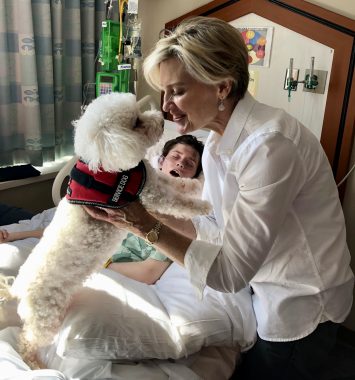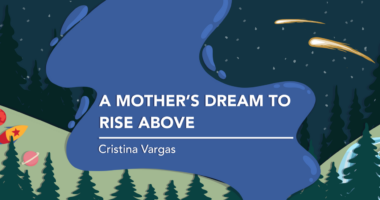7 Ways My Sister, Taylor, Defied Batten Disease

The world expected little from my younger sister, Taylor. And why shouldn’t they? After all, her diagnosis of CLN1 disease (Batten disease) at the age of 7 defied dreams for her future. Science said that instead of living life to the fullest, she’d simply lose it.
But Taylor had other plans. Consider some of the following ways in which she dared Batten disease to stop her — and came out on top:
1. Learning arithmetic: Taylor taught herself to read at the tender age of 3. She would read entire picture books aloud from the back seat of the car in the time it took to pick up a pizza just down the road. But math was never her strong suit, sometimes moving her to tears as she struggled to complete first-grade homework. Yet, instead of quitting, Taylor gritted her teeth and kept trying. I have fond memories of the rainy Saturday afternoons we shared at the neighborhood Starbucks — as painful as they were — when she would ponder arithmetic over decaf lattes and black-and-white cookies.
2. Reading with her fingertips: A less ambitious child may have taken Batten disease as a free pass to take it easy in school — to throw in the towel on learning. Instead, Taylor learned Braille, opening a window when blindness slammed the door on traditional reading and writing. Nearly four years after her death, I still have all of the Braille letters and cards my sister made for me.
3. Performing onstage: In the winter of 2008, Taylor participated in a clinical trial in Portland, Oregon, thousands of miles from our East Coast home. When she arrived home and returned to school, her long hair replaced by the stubble that barely concealed the surgical scars on her scalp, she discovered that her friends had carved out a place for her in their talent show routine. That’s how my blind sister ended up onstage, performing dance moves she’d never seen with minimal time to practice.
4. Having a social life: I was an awkward preteen, and middle school dances terrified me. Not Taylor. My sister never questioned the normalcy of a blind girl with a shuffling gait attending a dance. She just went — and always with a date. If laughter can light a dark room, my sister’s surely did.
5. Running a race: Taylor ran not one, but two 5K races with Girls on the Run as a fifth-grade student. Ever wonder why this column is called “The Long Sprint” or why I reference running so often? Because Taylor did it first.
6. Loving: Batten disease is unfair in the cruelest sense of the word. If hate had coursed through my sister’s veins, I wouldn’t have blamed her. But Taylor reminded me what love was on my darkest days, when I was angry at the world.
7. Living: Taylor’s last few years on Earth were anything but easy. She couldn’t see, walk, talk, or swallow food. She suffered from seizures. She suffered, period. But Taylor left this world on her own terms and schedule, kicking death off her doorstep many times during her last difficult weeks. She waited for a comfortable, sunny, inpatient hospice room and the birth of my son and, finally, an illicit hospital visit from her dog, posing as a pet therapy professional, hours before Taylor took her last breath.

Taylor and her mother, Sharon, with their dog, hours before Taylor took her last breath in 2018. (Courtesy of Laura King Edwards)
Life is funny. Love is boundless. And as Taylor taught me, the impossible is possible, just as long as you believe.
Taylor inspired Taylor’s Tale, a nonprofit organization that exists to make the impossible possible. My sister may be gone, but her legacy lives.
Note: Batten Disease News is strictly a news and information website about the disease. It does not provide medical advice, diagnosis, or treatment. This content is not intended to be a substitute for professional medical advice, diagnosis, or treatment. Always seek the advice of your physician or other qualified health provider with any questions you may have regarding a medical condition. Never disregard professional medical advice or delay in seeking it because of something you have read on this website. The opinions expressed in this column are not those of Batten Disease News or its parent company, BioNews, and are intended to spark discussion about issues pertaining to Batten disease.








Comments